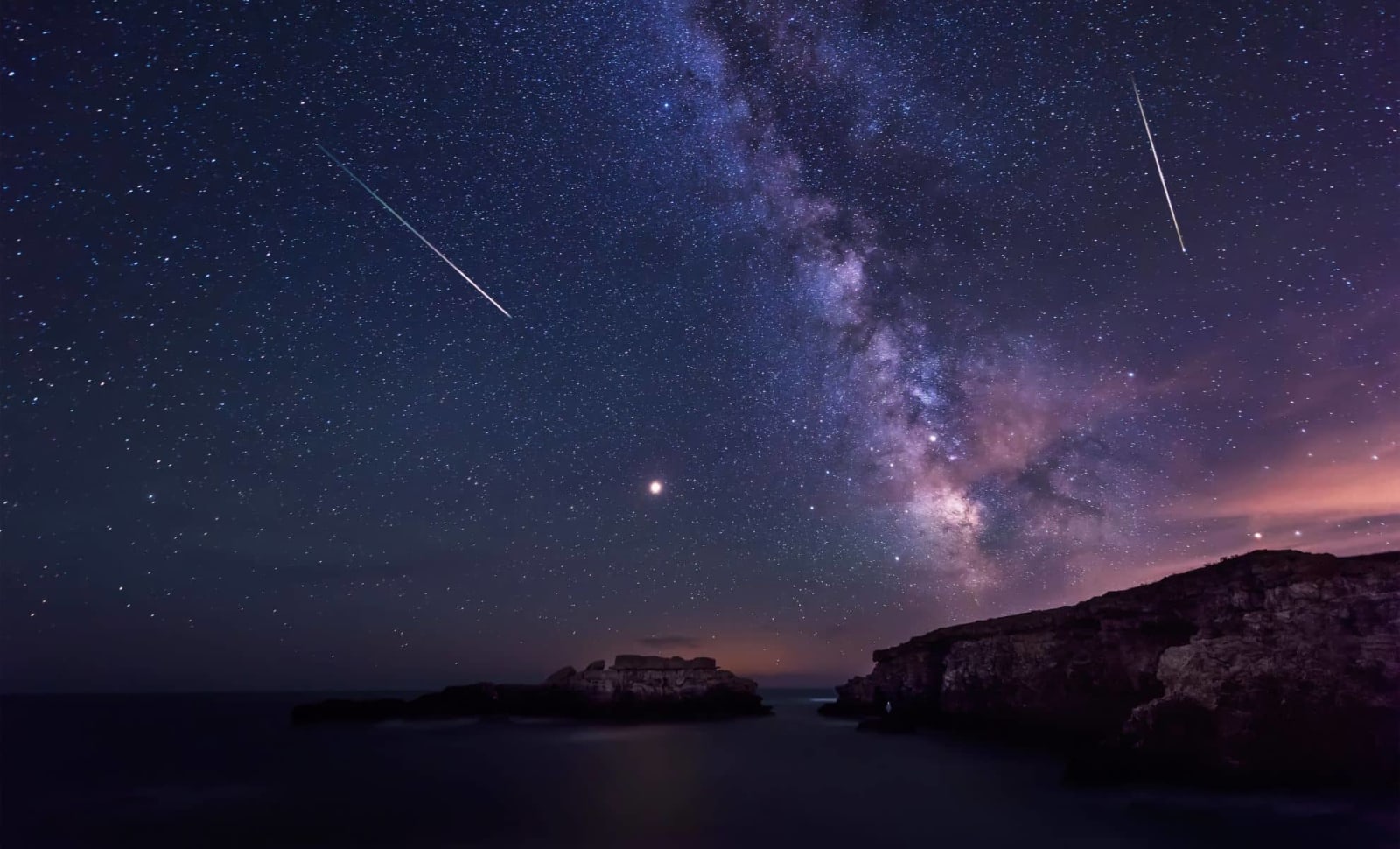A Rare Celestial Event: Three Meteor Showers Light Up the Summer Sky
This summer, skywatchers across the globe are in for a treat as three meteor showers—alpha Capricornids, Southern delta Aquariids, and Perseids—reach their peak activity. These events offer a unique opportunity to witness the beauty of the night sky, with multiple chances to spot brilliant shooting stars. With favorable viewing conditions expected through mid-August, this is an ideal time for stargazing enthusiasts.
Alpha Capricornids Bring Bright Fireballs
While the alpha Capricornids may not be the most intense meteor shower, it makes up for its modest numbers with dazzling fireballs. According to the American Meteor Society (AMS), this shower typically produces about five meteors per hour under dark, clear skies. However, what sets it apart is the occasional appearance of bright fireballs that light up the night.
The alpha Capricornids originate from comet 169P/NEAT, which orbits the Sun every 4.2 years. As Earth passes through the comet’s dusty trail, debris particles enter the atmosphere and vaporize, creating glowing streaks that sometimes leave luminous trails behind. This year, the shower will reach its peak overnight from July 29 to 30, and a waning crescent moon—only 27% full—will provide darker skies, making the display more visible.
Southern Delta Aquariids Offer Early Morning Views
Best viewed from the Southern Hemisphere, the Southern delta Aquariids are more prolific than the alpha Capricornids, producing up to 25 meteors per hour under ideal conditions. However, these meteors are often fainter, making them more challenging to observe, especially from northern latitudes.
NASA notes that the best time to view this shower is during the early morning hours when the sky is darkest and the radiant point—the area where the meteors appear to originate—is higher above the horizon. The Southern delta Aquariids are believed to come from comet 96P/Machholz, which completes its orbit around the Sun every 5.2 years, leaving behind debris that Earth intersects annually.
Perseids Ramp Up Toward an Obstructed Peak
The Perseids, often considered the most reliable and spectacular meteor shower of the year, are currently active and expected to peak from August 12 to 13. In ideal conditions, they can produce up to 100 meteors per hour, making them one of the most anticipated astronomical events each summer, particularly in the Northern Hemisphere.
However, this year’s peak may be affected by an 84% full moon, which could severely compromise visibility. According to the American Meteor Society, the bright moonlight is likely to reduce visible activity by at least 75%, allowing only the brightest meteors to be seen. Despite this challenge, the Perseids still offer a breathtaking spectacle, especially under clear skies and in low-light areas.
The Perseids are created by comet 109P/Swift-Tuttle, whose wide path leaves a dense debris trail. As Earth moves through this cloud, high-speed particles interact with the atmosphere to create the dazzling display. Even with the lunar interference, witnessing the Perseids remains a thrilling experience for many.
Conclusion
With three meteor showers occurring simultaneously, this summer offers a rare and beautiful opportunity for skywatchers to enjoy the wonders of the universe. Whether it’s the bright fireballs of the alpha Capricornids, the early morning views of the Southern delta Aquariids, or the spectacular show of the Perseids, there’s something for everyone to marvel at. So, grab a blanket, find a dark spot, and prepare to be amazed by the celestial dance above.







